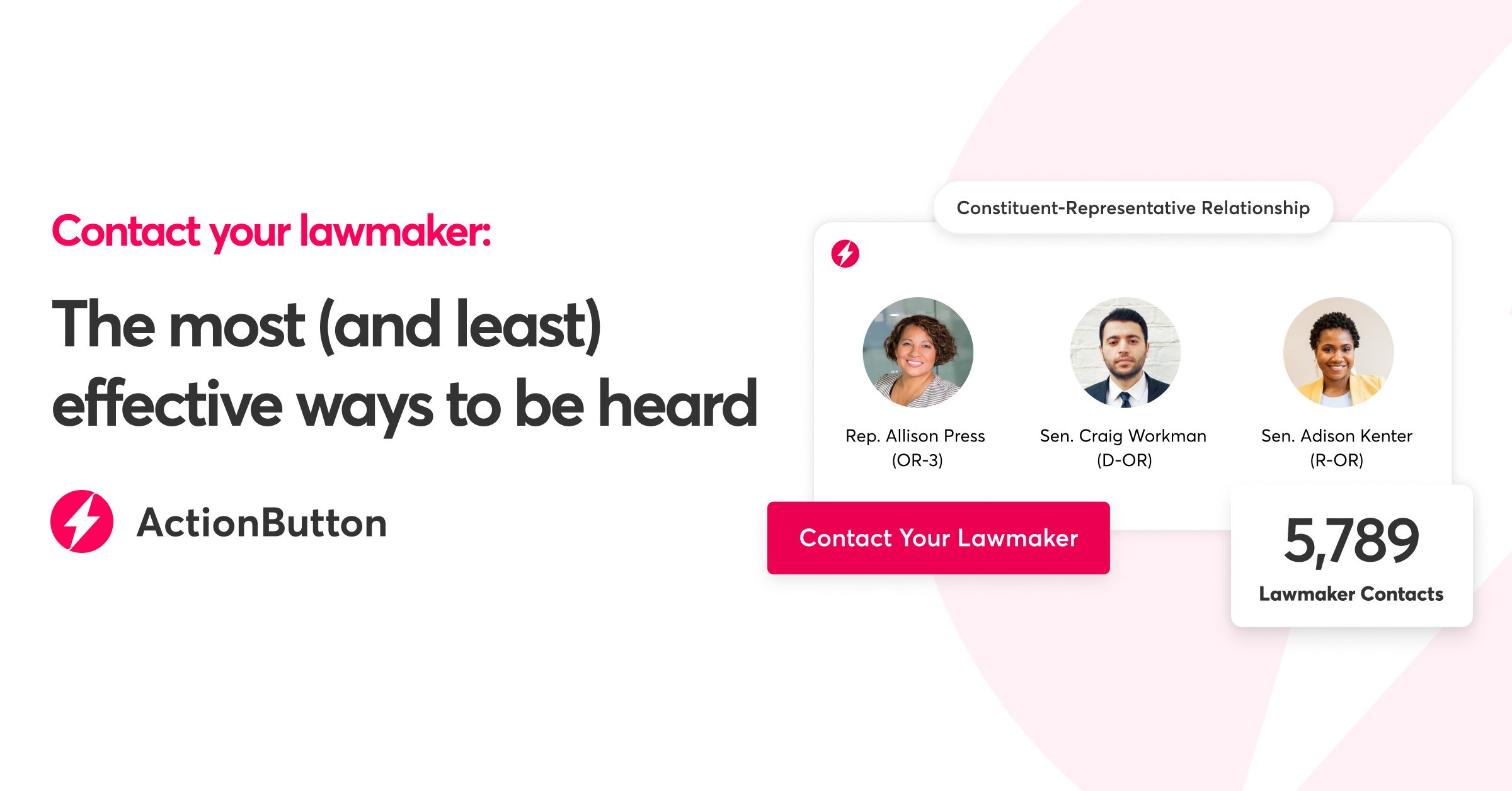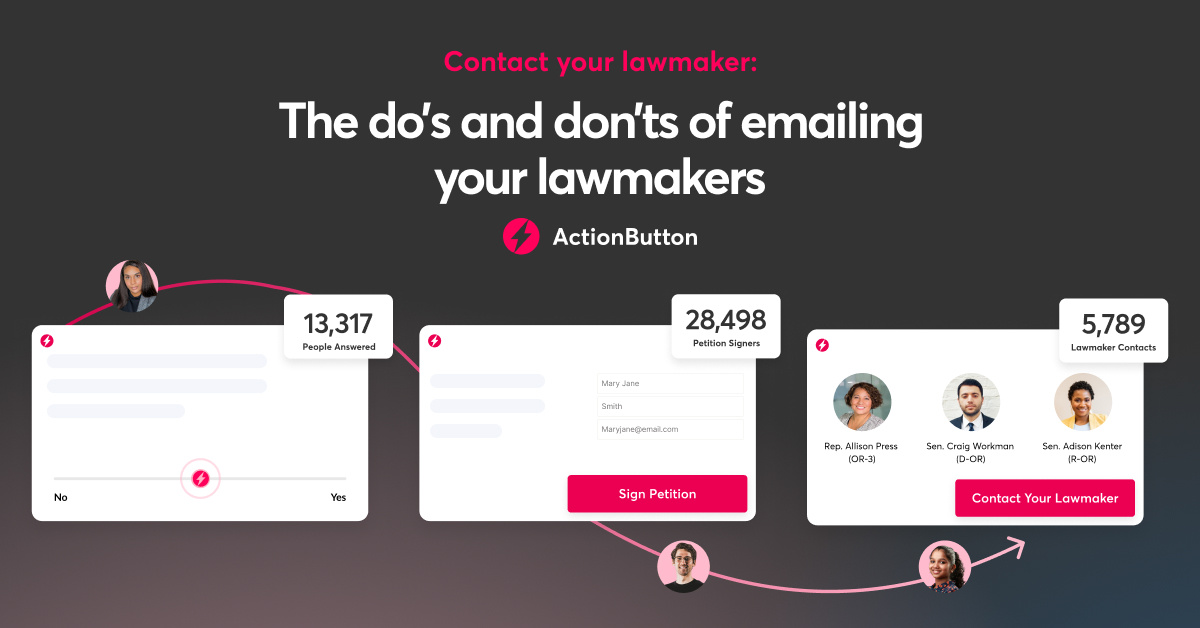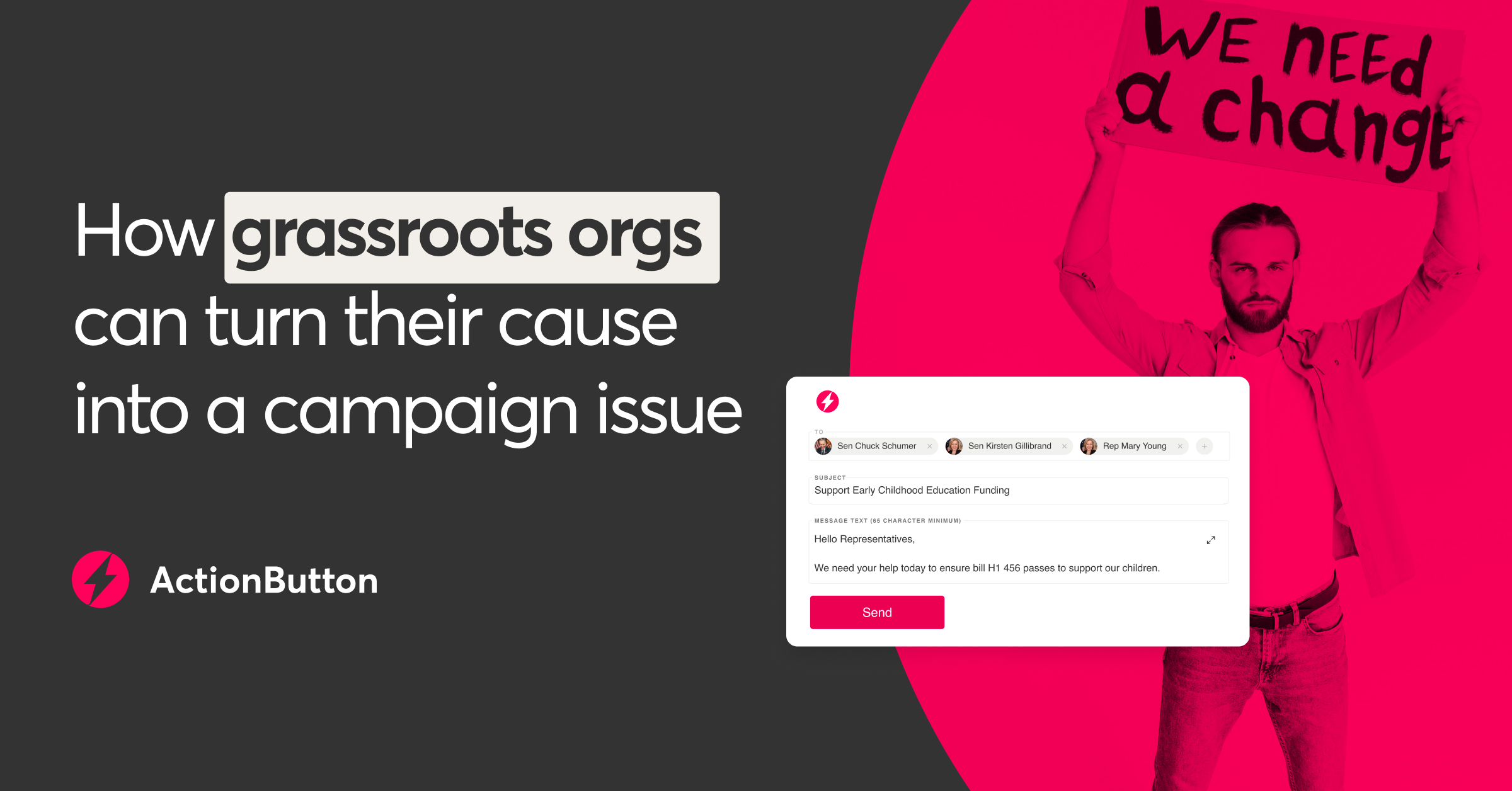Contact your lawmaker: The most (and least) effective ways to be heard
Ever wonder if your elected officials actually read those emails or listen to your voicemails? We surveyed elected officials across America to...
3 min read
.jpg) Taylor Green
:
Jul 16, 2025 9:15:15 AM
Taylor Green
:
Jul 16, 2025 9:15:15 AM
.png)
It can feel like laws appear out of nowhere. But legislation doesn’t just happen. It’s shaped by the people who show up.
State legislatures are powerful, usually creating the most noticeable lifestyle changes for their residents over local and federal jurisdictions. They’re also highly accessible, since state senators and congressmen generally represent fewer overall constituents and live in the district they represent.
No matter what issue drives you, you have more influence than you think. This guide breaks down how a bill becomes a law and how to plug in at every step of the legislative process.
What happens: A bill starts as an idea, often sparked by lived experience, community conversations, or activist efforts.
Where you come in:
Why it matters: Your lived experience can shape real legislation. Don't wait for permission to speak up about issues that matter to you. Every policy begins with a person who saw a problem and decided to speak up.
What happens: A lawmaker sponsors the bill, and it's officially introduced, assigned a number, and sent to a committee for review.
Where you come in:
Why it matters: Once a bill hits the floor, visibility becomes power. The more noise you make early on, the harder it is for lawmakers to ignore your feedback.
What happens: This small group of lawmakers decides whether the bill moves forward, gets amended, or dies quietly in committee.
Where you come in:
Why it matters: Committees are where bills live or die, but public pressure can tip the scale.
What happens: All members of the chamber (House or Senate) debate and vote on the bill during a legislative session.
Where you come in:
Why it matters: Things can move fast during legislative sessions. In the final hours before a vote, lawmakers are listening closely. When enough people speak up, it can shift the outcome. Don't wait to act, mobilize.
What happens: In states with two chambers, the process starts again in the other one.
Where you come in:
Why it matters: Momentum matters. What starts in one chamber can gain strength in the next. This isn't a repeat. It's your second chance to go bigger and reach more people.
What happens: If both chambers pass different versions, a behind-the-scenes negotiation starts to create a final version.
Where you come in:
Why it matters: This is your moment to keep the spotlight on and demand a fair, transparent process. When decisions move behind closed doors, coordinated advocacy keeps the light on.
What happens: The governor can sign the bill into law, veto it, or ignore it (which can still make it law in some states).
Where you come in:
Why it matters: A strong, visible campaign can be the difference between victory and defeat. When a bill reaches the governor, it's your last chance to shape the outcome. Make it count.
What happens: The bill becomes law, but enforcement and rollout are everything for real-world impact.
Where you come in:
Why it matters: Passing a bill is a milestone. Implementation is the marathon. Stay involved for lasting change.
Most bills don't make it the first time. And that's okay, especially for progressive legislation.
Every email, meeting, post, petition, and protest builds something bigger. Progress isn't always linear, but every action you take is an investment in future policy. Your voice matters, whether you're just starting your advocacy journey or already organizing, and change happens when people like you speak up, organize, and show up consistently.
Stay loud. Stay consistent. Lasting change takes time.
Ready to stay in the loop? Subscribe for advocacy tips, or see how ActionButton can help you turn support into action in just a few clicks.

Ever wonder if your elected officials actually read those emails or listen to your voicemails? We surveyed elected officials across America to...

Your community's voice matters in the political process. Equip them to use it to advocate for the issues they care about by providing clear...

Candidate filing deadlines are closing. Some have already passed. Now is your moment. Even small, scrappy grassroots orgs can make sure your cause...